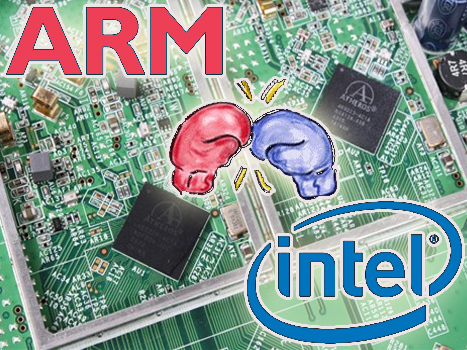This article is a guest contribution from Rob Enderle, Principal Analyst, The Enderle Group.
This week AMD pulled the plug on their participation with BAPCo’s SYSmark benchmarking project. While there has been a bit of drama related to this with some folks blaming Intel for being too heavy handed and others blame AMD for being too thin skinned, the reality is that both companies are on different paths now and that, as a result, a collaborative common benchmark no longer makes any sense. Let me explain.
SYSmark
SYSmark is a benchmark that was designed to measure PCs largely the way they were in the 1990s, heavily using office applications and as largely standalone work centers. Back then graphics were largely reserved for gamers and SYSmark was about business. Intel and AMD were on the same CPU centric path and neither had any real strength in graphics which were added from companies like ATI and NVIDIA after the fact and only on high end systems generally not targeted at business.
This is a world defined by Intel, who remained throughout, vastly larger and better funded than AMD and AMD played the role, albeit involuntarily, as backup vendor to Intel. Still it was a good business until the two companies stopped being socket compatible and that one move changed the impression that it was very difficult for AMD to beat Intel to impossible.
AMD was simply overmatched.
Changing the Game
So AMD changed the game; realizing that both companies were very weak when it came to graphics they took a huge gamble and bought ATI who had been struggling against NVIDIA but was better matched to that company than AMD was to Intel. This move set AMD back a bit against Intel as they integrated the two technologies but they ended up with a dramatically different part, called Fusion, which is a hybrid of the technology they had and the technology they bought.
This part was focused on where applications seemed to be going, to something we were calling GPU computing, and as a hybrid it was designed to bridge between the past and future. In short AMD no longer agreed with Intel with regard to how people were going to use their PCs and this put SYSmark at risk.
The Death of SYSmark
You see a collaborative benchmark is only good if the two companies providing the technology can agree on how to measure it. Once they disagree the benchmark is done. Just like you wouldn’t benchmark a sports car to a truck, if the two products are fundamentally different it makes no real sense to use a common benchmark against them. In fact, people weren’t using their PCs in the same way there were in the 90s anyway. Few are using spreadsheets anymore or local databases as these have given way to hosted and cloud based remote applications. Movies are being streamed and increasingly applications are calling on the graphics side of the PC to render, transcode, or even run highly parallel new applications.
SYSmark needed to go through a dramatic change anyway but Intel and AMD, being on different paths, no longer could agree on what that change was and that disagreement killed it.
Wrapping Up: The End of an Era
We’ve really reached the end of another personal computer era; the web, cloud services, GPU computing, and a huge shift in focus to hardware that is better connected, lighter and has longer battery life has forever changed the world that was into the world that will be. The death of SYSmark is no one’s fault, Intel isn’t being evil and AMD isn’t being unreasonable. The firms changed, the market changed, and a common benchmark between the vendors simply made no more sense.

